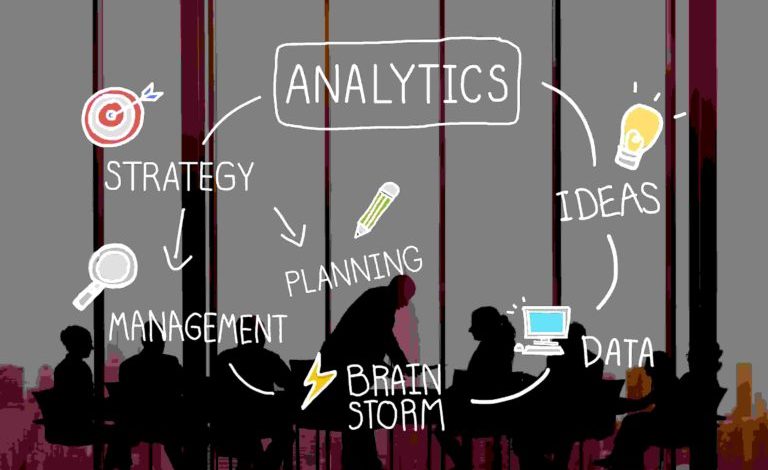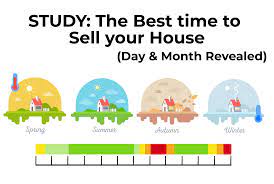Business Analytics and Fundamentals

The understanding of business analytics?
The combination of skills, technologies, and practices use to examine an organization’s data and performance in order to gain insights and make data-driven decisions in the future using statistical analysis is calling as business analytics (BA). BA’s goal is to determine which datasets are useful and which can boost revenue, productivity, and efficiency.
Business analytics fundamentals
Business analytics has a wide range of applications, however in commercial enterprises, it is most commonly use to:
- Analyze information from many sources. Cloud apps, marketing automation tools, and CRM software are all examples of this.
- To detect trends in datasets, use sophisticated analytics and statistics. These patterns can assist you in predicting future trends and gaining fresh insights into the customer and their behavior.
- In real-time, keep an eye on KPIs and trends. This allows businesses to not only have all of their data in one place, but also to make quick and accurate decisions.
- Decisions should be based on the most up-to-date facts. You may be confident that you are completely inform for just one, but multiple distinct scenarios because BA provides such a wide quantity of data to back up your judgments.
While these are the most prevalent use cases, business analysis may conduct in four different ways. They’re put in place in phases, starting with the most basic. When employing BA, one strategy isn’t more crucial than the other; it all relies on your end-goal.
Four Sorts of Analytics
When you employ these four sorts of analytics, you can clean, dissect, and consume your data in a way that allows you to build solutions for whatever difficulties your company is facing.
- Descriptive analytics is the process of interpreting historical data and KPIs in order to spot trends and patterns. Using data aggregation and data mining techniques, this gives for a large picture view of what happened in the past and what is occurring now. Many businesses utilize descriptive analytics to gain a better understanding of their consumers’ behavior and how to tailor marketing efforts to them.
- Diagnostic analytics is Looks back at prior performance to see what factors impact certain tendencies. Drill-down, data discovery, data mining, and correlation are using to uncover the reason for specific occurrences. Algorithms for categorization and regression are utilizing once an understanding of the likelihood of an event and why it could happen has been obtained.
- Predictive analytics use statistical models and machine learning approaches to estimate and analyze future events. The results of descriptive analytics are frequently using to develop models that predict the likelihood of particular events. Sales and marketing teams frequently utilize this kind to estimate consumer attitudes based on social media data.
- Prescriptive analytics: Recommends how to handle similar circumstances in the future based on prior performance data. This form of business analytics may not only predict outcomes, but it can also suggest particular actions that must be taken in order to get the greatest potential conclusion. Deep learning and complicated neural networks are frequently used to do this.
This form of business analytics is frequently used to match numerous solutions to a customer’s current demands. Which approach to choose will be determined by the current company circumstances.
Business analytics components
Let’s break down all of the components that go into business analytics and the ways it employs to arrive at its beneficial findings now that we’ve narrowed down how it works.
The strategy you use for diving deep into BA will be determined by the end-goal you choose before beginning the process. Regardless of the strategy you use, you’ll discover actionable insights waiting for you at the end.
Data Mining
Using machine learning, statistics, and database systems, data mining is the approach of sifting through huge datasets to identify patterns, trends, and other facts about data that aren’t immediately evident. Regression, clustering, and outlier identification are just a few of the data mining techniques that business analytics might use.
This is an important aspect of business analytics since it allows for more rapid and efficient decision-making.
A corporation, for example, would be able to observe which clients are buying particular items at various periods of the year using data mining. This information may subsequently be utilizing to categorize and segment those clients.
Text Mining
Text mining is the technique of obtaining high-quality information from text found in applications and on the internet. It is a technique for extracting textual data from social networking sites, blog comments, and even contact center scripts. The information is then utilizing to enhance customer service and experience, develop new products, and assess their rivals’ performance.
Data Aggregation
Data aggregation is the process of gathering and collecting data before presenting it in a summary style. It must first be gathered, consolidated, cleaned, and filtered to remove any errors or redundancies before it can be examined.
This is a critical phase in business analytics since the precision with which you can extract insights from data is directly proportional to the type of relevant and actionable outcomes you’ll get at the end.
A marketing team could utilize data like consumer demographics and analytics (age, geography, amount of transactions, etc.) to tailor their messaging and offers as an example of data aggregation.
Forecasting
Businesses receive a forecast of future events or behaviors when business analytics are utilizing to assess operations that occur during a certain time or season, thanks to historical data.
Forecasting is useful for a variety of things, including retail sales around certain holidays and increases in specific internet searches around specific events, such as an award ceremony or the Super Bowl.
The necessity of forecasting as a key component of your plan. Forecasting yearly objectives and projecting online user behavior, such as traffic and conversions, may conduct using historical data. Customer journey analytics allow you to track interactions with a potential lead from the initial point of contact until conversion. Having access to all touchpoints in the nurturing process allows you to improve the user journey by optimizing the phases in between.
Business analytics not only aids in the development of your lead funnel, but it also has an influence on your bottom line in other ways. Forecasting call traffic, for example, can aid in the optimization of call center personnel resources. The capacity to collect and evaluate data is not only advantageous, but also necessary for making data-driven and well-informed judgments.”
Visualization of data
Data visualization is a must-have aspect of business analytics for all you visual learners out there. It provides the facts and insights derived from your data in an interactive graph or chart in a seamless manner.
This procedure requires the use of the correct data visualization tools to help you track company measurements and KPIs in real time so you can better understand performance and goals. Take a look at the hundreds of independent reviews provided by G2 if you’re not sure which software solution is best for your organization.
What is the importance of business analytics?
Business analytics has a lot of moving components, but it’s possible that you’re not sure why it’s relevant to your company in the first place.
To begin, business analytics is the tool that your firm requires in order to make informed judgments. These selections will most likely have an influence on your entire company since they will help you enhance profitability, market share, and deliver a higher return to potential shareholders.
There’s no disputing that technology has an influence on so many enterprises, but when utilised appropriately, BA has the potential to improve your business by providing a competitive edge to a number of firms.
While some businesses are unclear what to do with vast volumes of data, business analytics combines this information with actionable insights to help you make better business decisions.
Furthermore, because this data may be providing in any format, your organization’s decision-makers will inform in a way that suits them and the objectives you set at the start of the process.
Essentially, there are four main reasons why business analytics is important in any industry:
- Improves performance by providing a clear picture of what is and isn’t working for your company.
- Allows you to make faster and more accurate decisions.
- Reduces risk by assisting a company in making the best decisions possible given customer behavior, trends, and performance.
- Answers questions about the customer to inspire change and innovation.
Benefits of Business Analytics
Business analytics has several advantages, regardless of the size of your company or the industry in which it works.
One of the most important advantages is that it helps your company to prepare for the unexpected. BA can forecast the future patterns in an organization’s sales, earnings, and other vital variables by modeling them. Businesses can now notice changes that may occur yearly, seasonally, or on any scale. This gives them the opportunity to prepare and plan ahead.
To prepare for a sluggish season, you might need to cut back on expenditure or engage in fresh marketing efforts. Larger organizations may find it easier to estimate order volume and waste with BA.
Your company may also use business analytics to test new marketing tactics. You can better analyze the impact of your advertising efforts on different groups and demographics since BA gives data on customer behavior. You may also explore delivering targeted deals to reclaim the customer’s business if you can discover that they are less likely to return.
You’ll have a competitive advantage over the competition when you use BA to your benefit, regardless of your industry.
Final Thought
When your company uses business analytics, you’ll be able to make more informed decisions about revenue, customer experience, and general efficiency.
These techniques are sometimes referred to as “hidden gems” since they might disclose ways to get an advantage over your competition. Set a goal for yourself and keep your eyes on the prize. You’ll pleasantly surprise by what you discover. For more information regarding Business Analytics click here, analytics for business so you can know more.
This article is posted on Article Mug.



